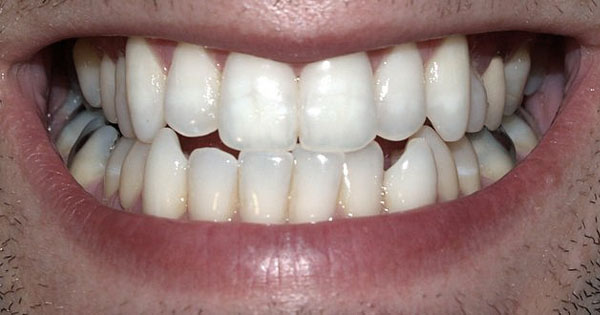
My late cousin, the noted critic and poet Philip Hobsbaum, wrote a poem called “A Journey Round the Inside of My Mouth.” I imagine that it is the kind of verse only a British poet would compose, given that he writes of teeth that “are tombstones for the probing tongue, ridged, jag-edged and uneven,” and a dentist who “seals, fastens and occludes, but shakes his head.” We Brits are notorious for our bad teeth—a product, perhaps, of a general lack of fluoridated water or perhaps our predilection for Sticky Toffee Pudding. But the British are not alone in dental deficiencies: in the United States, 10 percent of adults aged 50 to 64 have no teeth at all, according to the National Institute of Dental and Craniofacial Research.
Perhaps there are some among us who have dreamed of a brand new set of pearly whites—and not dentures or implants made of porcelain or plastic, but real, live, replacement teeth formed from layers of dentin and enamel. I doubt, however, that we ever thought the source of those teeth would be urine. Nevertheless, a team of Chinese cell biologists, led by Duanqing Pei from the South China Institute for Stem Cell Biology and Regenerative Medicine in Guangzhou, have generated “tooth-like structures” from stem cells extracted from human urine.
It seems that urine is a good source of pluripotent stem cells—cells that can divide and differentiate into many specialized cell types—and researchers at Wake Forest Institute for Regenerative Medicine in North Carolina say that urine-derived stem cells could form all kinds of tissues, including bone, cartilage, fat, and nerve cells. The Wake Forest researchers have directed the stem cells—which probably originate in the upper urinary tract, including the kidney—to form bladder-type cells. But the Chinese are the first to have turned these cells into solid organs, or rather what they call “tiny structures that resemble teeth.”
The researchers coaxed epithelial cells (which give rise to tooth enamel) from human-urine-derived stem cells and mixed them with mouse embryonic cells, which give rise to dentin, cementum, and pulp, the three other main components of teeth. They transplanted the cell mix into living mice and three weeks later observed the formation of primitive tooth-like organs containing pulp, dentin, and enamel-forming cells. Granted, the scientists used mouse cells, and the resulting little gnashers were one-third the hardness of human teeth. By substituting human stem cells in their formula, the team could one day realize “the final dream of total regeneration of [a] human tooth for clinical therapy.”
If that dream is realized, then toothless adults could donate some of their own cells for a bioengineered tooth bud that could be transplanted back into their jawbone. Still, protecting our original teeth is best. That’s why, when I brush my own and my children’s teeth, I invoke a piece of doggerel from another celebrated British bard, Spike Milligan: “English Teeth, English Teeth! Shining in the sun. A part of British heritage, Aye, each and every one.”

